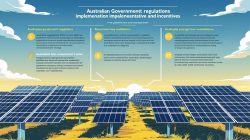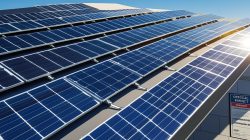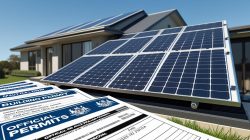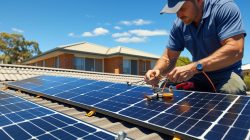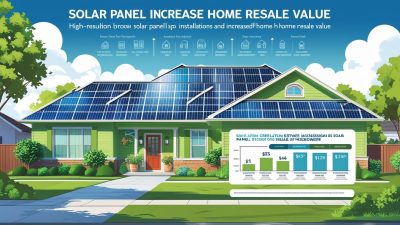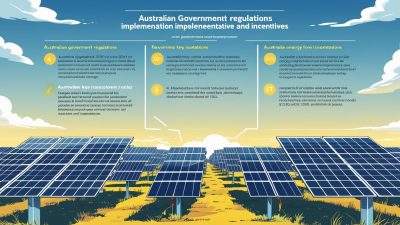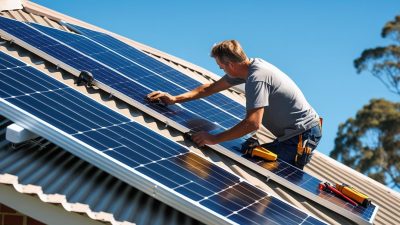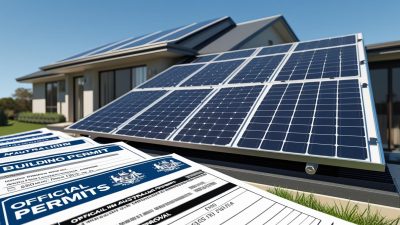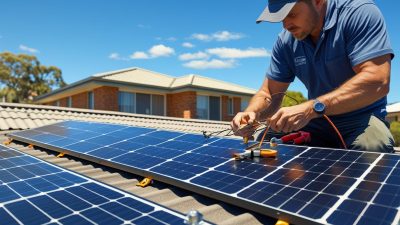Solar Farm Land Requirements in Australia 2025
Bloggerbanyumas.com – Solar Farm Land Requirements in Australia 2025 As the world increasingly embraces renewable energy, Australia stands at the forefront of solar power adoption. The country has made significant strides in both solar technology and solar farm development. Solar farms, which convert sunlight into electricity using photovoltaic cells, have become integral to Australia’s clean energy future. By 2025, solar farms are expected to play an even more significant role in the nation’s energy grid. However, the expansion of solar farms requires careful planning, particularly in terms of land requirements. This article will delve into the various land requirements for solar farms in Australia by 2025, considering the environmental, economic, and regulatory aspects involved in this rapidly growing sector.
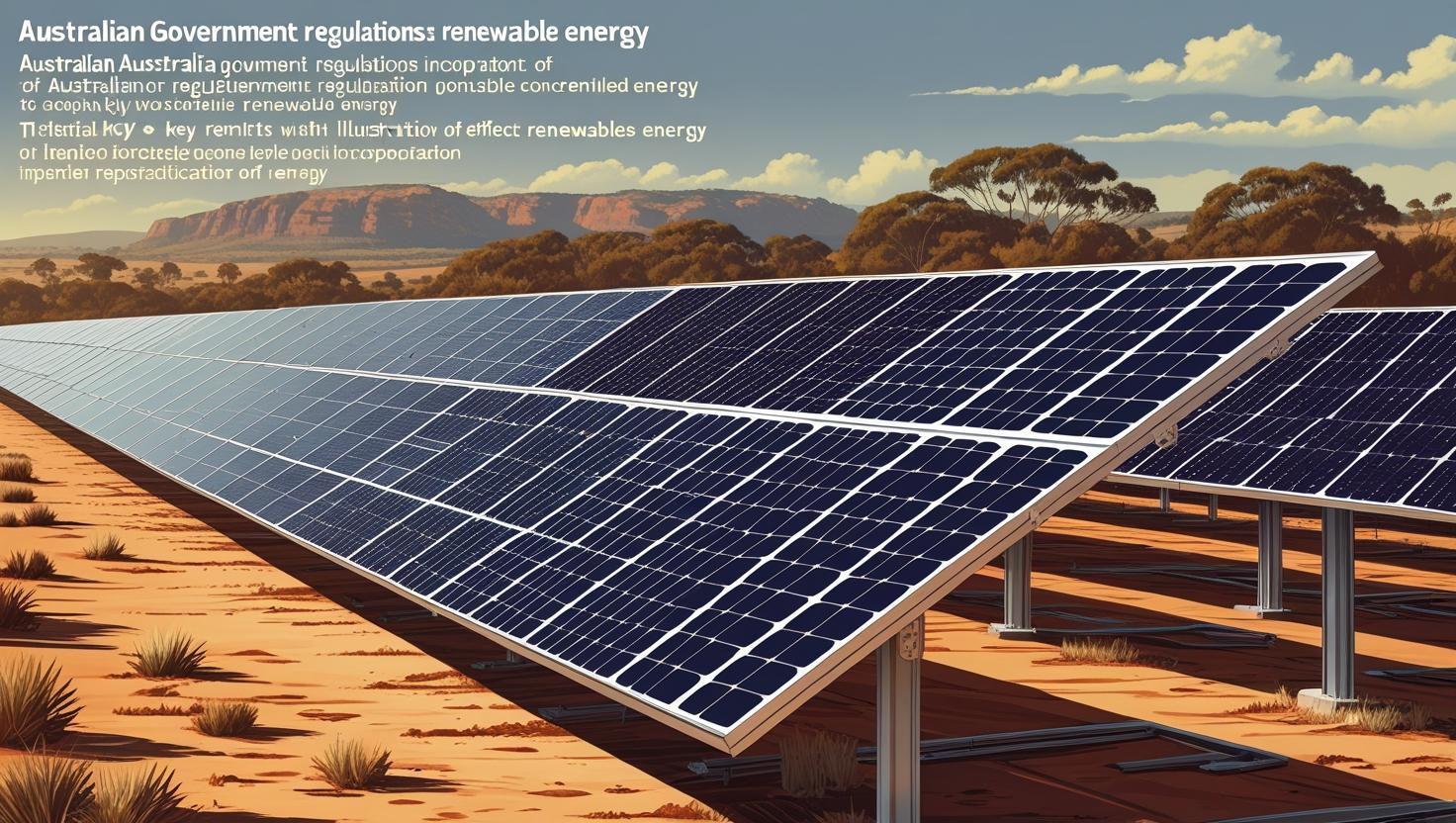
Understanding the Land Requirements for Solar Farms in Australia
Solar Farm Size and Land Area Considerations
The size of a solar farm directly influences its land requirements. In Australia, the typical land area needed for a solar farm depends on the scale of the project, the type of solar panels used, and the energy output intended. Solar farms can range from small-scale operations (generating a few megawatts of electricity) to large-scale projects (producing hundreds of megawatts). On average, it is estimated that a utility-scale solar farm in Australia requires approximately 3-4 hectares of land per megawatt (MW) of installed capacity. Therefore, a 100 MW solar farm would typically require around 300-400 hectares of land.
This land area is used not only for the solar panels but also for essential infrastructure such as access roads, substations, and transformer stations. The available land must also account for spacing between panels to avoid shading, which can significantly reduce energy efficiency. Moreover, different types of solar panel layouts and the specific geographical location will impact how much space is needed.
Key Factors Affecting Land Requirements
- Solar Panel Efficiency: With advancements in solar panel technology, newer panels are becoming more efficient, allowing more power generation per square meter of land. This means that the land required for a solar farm may reduce over time, but the overall area still remains significant for large-scale projects.
- Topography and Geography: The terrain of the land plays a crucial role in determining the layout of a solar farm. Flat or gently sloping land is ideal, as it minimizes the cost of land preparation and installation. On the other hand, hilly or rocky areas may require additional site preparation and could impact the overall space needed.
- Environmental Factors: Environmental concerns such as water drainage, local biodiversity, and land conservation policies will influence the suitability of land for solar farming. Certain ecosystems or protected areas may be off-limits for development, further restricting available land for solar farms.
- Access to the Power Grid: Proximity to the electricity grid is another factor in selecting land for solar farms. A solar farm must be located close enough to connect to the grid for the electricity to be distributed effectively. This can sometimes necessitate additional land for grid connection infrastructure, thus increasing the land requirements.
Types of Land Suitable for Solar Farms
In Australia, not all land is suitable for the development of solar farms. The key to selecting the right land lies in ensuring it meets specific physical and legal criteria, balancing the needs of energy production with environmental and community concerns.
Agricultural Land
Agricultural land is one of the most commonly used land types for solar farms in Australia, especially in rural and regional areas. These areas typically offer large, flat expanses of land that are conducive to solar farm installation. Additionally, agricultural land can often be leased to solar developers without significant disruption to local farming activities, such as grazing or cropping, thus benefiting both the energy sector and the local community.
However, farmers and landowners need to assess the long-term effects of using agricultural land for solar farming, including changes in land productivity and potential alterations to soil health. Agricultural land that is currently underutilized, such as dryland or marginal farming areas, may present the best opportunities for solar farm installation without significant conflict with current agricultural practices.
Unused or Low-Quality Land
Unused or low-quality land, including degraded land, former mining sites, or land that is not suitable for traditional agriculture, is another promising candidate for solar farm development. This type of land can be revitalized for solar use, helping reduce environmental degradation while contributing to clean energy production.
For example, former mining sites often have large, cleared spaces that are ideal for solar installations, and their previous land disturbance may reduce the complexity of site preparation. These areas may also be located in regions where other land uses are limited, making them ideal candidates for solar farm development.
Urban Rooftops and Industrial Land
Although large-scale solar farms typically require vast expanses of rural land, there is growing interest in utilizing rooftops of commercial buildings, warehouses, and industrial complexes. In urban areas, rooftop solar installations can significantly reduce land use, turning otherwise underutilized space into valuable energy-producing assets. By 2025, it is expected that many cities in Australia will encourage the installation of rooftop solar panels to complement the larger, ground-based solar farm installations.
Land Tenure and Zoning Requirements
Before a solar farm can be established, developers must navigate various land tenure and zoning laws, which vary across Australian states and territories. In general, the land used for solar farms must be zoned for such purposes, and developers will need to obtain the necessary permits and approvals from local and state governments. In some regions, this process can be more complicated due to local land use restrictions, environmental protection areas, and heritage considerations.
In Australia, there has been a push towards streamlining approval processes for renewable energy projects, including solar farms. The government’s Renewable Energy Zones (REZs), established in several parts of the country, are designed to concentrate renewable energy infrastructure in specific areas, thereby reducing land-use conflicts and ensuring that solar farms are sited in areas where they can be most effective.
Regulatory and Environmental Challenges
In 2025, one of the primary challenges solar farm developers will face is ensuring their projects comply with a complex web of environmental regulations. The potential impacts of solar farms on local ecosystems, wildlife, and water resources must be carefully assessed to minimize any adverse effects.
Environmental Impact Assessments
Before a solar farm project can proceed, developers are required to conduct an environmental impact assessment (EIA) to evaluate the potential impacts on biodiversity, soil, water, and local communities. These assessments are particularly important in areas that may be home to endangered species or sensitive ecosystems, such as wetlands or forests. Developers will need to demonstrate that their projects will not have a significant negative impact on the local environment and will take measures to mitigate any potential risks.
Cultural and Indigenous Considerations
Cultural and indigenous considerations are also a key part of the land assessment process. Developers must engage with Indigenous communities to ensure that any land used for solar farm development does not interfere with sacred sites or cultural practices. In many cases, developers will enter into agreements with Indigenous landowners to ensure that both the community’s cultural rights and the solar farm’s operational needs are respected.
Future Trends and Land Requirements by 2025
The demand for solar farms is expected to increase significantly by 2025 as Australia seeks to meet its renewable energy targets. This will require a careful balance of land availability, environmental considerations, and technological advancements. The land requirements for solar farms will continue to evolve as new technologies, such as bifacial solar panels and floating solar farms, are developed. These innovations have the potential to reduce land use while improving energy production.
Furthermore, with advancements in energy storage technologies and grid infrastructure, solar farms may be able to operate more efficiently and with fewer land requirements. The integration of solar power with other renewable energy sources, such as wind and hydroelectricity, could also reduce the need for vast land areas by enabling more flexible and distributed energy generation systems.
Conclusion
As Australia looks toward 2025, the land requirements for solar farms will continue to be a significant consideration for the growth of the renewable energy sector. While large-scale solar farms will continue to be a cornerstone of Australia’s energy landscape, the adoption of new technologies and the efficient use of available land will help meet the country’s clean energy goals. By selecting the right type of land, engaging with local communities, and adhering to environmental regulations, solar farm developers can contribute to a more sustainable and energy-efficient Australia.
The successful expansion of solar farms in Australia will not only depend on the availability of land but also on the ability of stakeholders to collaborate and navigate regulatory and environmental challenges. As the industry evolves, the potential for solar energy to meet Australia’s future energy needs remains bright, with land use playing a crucial role in shaping the renewable energy landscape.


